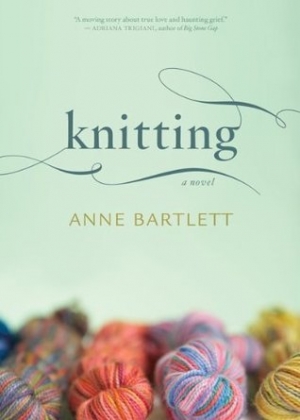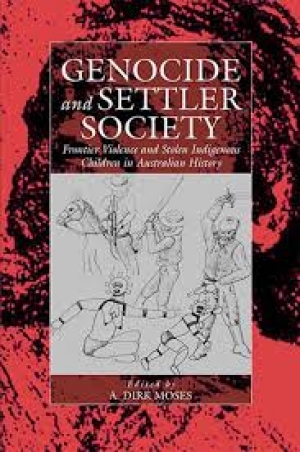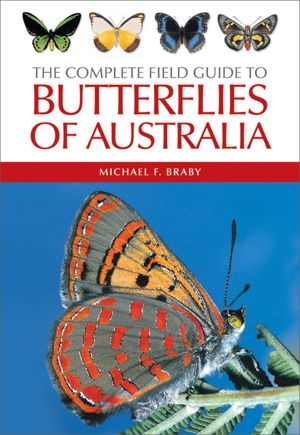Review
Carmel Bird stakes a great deal on her prose style. The delicate latticework of imagery, the fascination with detail and colour, the allusions, the linguistic gamesmanship, the florid descriptive passages (and Bird’s writing is literally florid: there are flowering plants everywhere) – these are at least as important to her fiction as narrative. Her writing does not just revel in the sensuality of language; at times, this sensuality shapes the form. In her long story ‘Woodpecker Point’, for example, the action is veiled in lush rhetoric. The intention is to tease out small correspondences and to develop an intricate verbal pattern. So, while the narrative is disjointed, the finely woven imagery is rolled out like one long strip of carpet. This is often true of Bird’s short stories. They frequently centre on strange or sinister happenings, around which grows a delicate bubble of linguistic indulgence.
... (read more)Jo Case reviews ‘Knitting’ by Anne Bartlett and ‘Five Oranges’ by Graham Reilly
Knitting, the first novel from ghostwriter and former professional knitter Anne Bartlett, tells the story of a newly widowed academic and her unexpected friendship with a gifted knitter that enables her to move on with her life. Bartlett’s rich (and uncredited) experience of writing other people’s stories puts this intimate exploration of women’s friendships in a different category from your average ‘chick lit’. Age journalist Graham Reilly is another writer who transcends his genre in Five Oranges, a crime novel about the ragtag adventures of a tight-knit circle of working-class Glaswegian friends and their on–off tangles with the Saigon mob. Part of the reason that these two novels are so much better than many in their respective genres could be that they go beyond formula and caricature.
... (read more)John Rickard reviews ‘Batman in the Bulletin: The Melbourne I remember’ by Keith Dunstan
‘There is no Australian city other than Melbourne which could have produced Keith Dunstan,’ writes Barry Humphries in his foreword to this collection. Indeed, Dunstan, journalist and writer, has long been a Melbourne institution, particularly remembered for his daily column in the Sun News-Pictorial, ‘A Place in the Sun’. While working as a journalist, he was also busy as a writer of popular history: among his many works is that splendid trilogy, Wowsers (1968), Knockers (1972) and Ratbags (1979), the juxtaposition of those titles telling us so much about the character of Australian culture.
... (read more)John Frow reviews ‘Adorno: A political biography’ by Lorenz Jäger (translated by Stewart Spencer) and ‘The Cambridge Companion to Critical Theory’ edited by Fred Rush
In the winter of 1968–69 the buildings of the Institute for Social Research at the University of Frankfurt – the symbolically resonant home of what had come to be known as the Frankfurt School – were occupied by students. The police were called in, and Theodor W. Adorno, one of the great radical theorists of the twentieth century, pressed charges against a young man whose doctoral work he was supervising. Two months later, a group of women forced their way into Adorno’s lecture, handed out leaflets proclaiming that ‘Adorno as an institution is dead’, and ‘surrounded him, strewing flowers, performing a dumb show and … baring their breasts’. In action after action, the contempt of the students for the radical theorists of an older generation was made clear.
... (read more)Kerryn Goldsworthy reviews ‘Platform Papers No. 4: The Myth of the Mainstream: Politics and the performing arts in Australia’ by Robyn Archer and ‘The Woman I Am: A memoir’ by Helen Reddy
In 1964 the Australian television show Bandstand set up an annual talent contest called Bandstand Starflight International. In its first year, one of the national finalists was a sixteen-year-old schoolgirl called Robyn Smith, who later changed her surname to Archer. The following year, the contest was won by a 24-year-old professional singer called Helen Reddy.
... (read more)After rain at cooler times of the year, the bush is full of fungi. Fruit-bodies of mushrooms, truffles, puffballs, morels, slime moulds and other larger fungi spring forth in a great variety of shapes and colours. For select Australian fauna and flora, such as birds, reptiles or orchids, there are comprehensive and richly illustrated field guides, which have sufficient text to assist the user in putting names to species encountered. However, existing guides to Australian fungi cover a rather limited number of species, or lack text. Putting names to the multitude of fungi is therefore rather difficult.
... (read more)First, the good news or the bad news about this novel? Perhaps the bad. Presenting the worst face of a character to the world is not in itself fresh or especially amusing any more. We are overrun with sitcoms reflecting us, warts and all. Bridget Jones was among the first of these types of characters in popular fiction, and I was variously amused and pained by her hapless and heart-warming antics. More recently, the anonymous Bride Stripped Bare startled me for the statutory fifteen minutes, and left me wondering where all the attractive taxi drivers were hiding. In Alison Says, a conflation of the above, I found the central character, Maggs, to be a bit tiresome – and tired. Maggs is a 24-year-old drama teacher who has recently been dumped. Two months later, Jamie, the ex-inamorato, becomes engaged to Lorelei, aka ‘the Rhine slut’. In the wake of these events, Maggs is emotionally vulnerable, but it’s all rather in the manner of someone in an arrested state of adolescence. Suzanne Hawley’s Maggs is a stock characterisation based on the humour of self-absorption and victimhood, narcissism and obsession. Hawley’s novel does not fully realise the key ingredient of chick lit: a central character that the reader either loves or loves to hate.
... (read more)Marilyn Lake reviews ‘Genocide and Settler Society: Frontier violence and stolen Indigenous children in Australian history’ edited by A. Dirk Moses
Is ‘genocide’ a useful concept for understanding colonialism and, in particular, the destruction of Aboriginal communities during the settlement of Australia? Dirk Moses, the editor of this stimulating collection of essays on Genocide and Settler Society, thinks so, but with qualifications. Many of his contributors agree, but tend to be more comfortable using the concept in its adjectival form: there were genocidal ‘moments’, ‘plans’, ‘processes’, ‘relationships’, ‘tendencies’ and ‘thoughts’ in Australian history, but ‘genocide’ – the crime of deliberately exterminating a people – is another matter. The charge of ‘genocide’ tout court gives historians pause, for it is essential to prove intent and state sanction on the part of the perpetrators.
... (read more)‘Most of us have a good bit of ego wrapped up in our children. We want them to do well so that we feel good about ourselves as well as them,’ says the wise and frank Jackie French. Parents walk a fine line between encouragement and pressure. Each of the above books is careful not to let itself fall over that line.
... (read more)Peter Menkhorst reviews ‘The Complete Field Guide to Butterflies of Australia’ by Michael F. Braby
Butterflies are perhaps the most agreeable of insects: harmless, highly visible, diurnal, brightly coloured and almost whimsical in their movements. Because of these qualities, they have attracted considerable attention from naturalists and artists throughout recorded history. Since Victorian times, their diversity and natural history have been documented in great detail – more than for any other group of invertebrate animals. Butterfly collecting was a popular pastime until recent decades; many a colonial home contained a wood cabinet with neat rows of carefully pinned butterfly specimens. More recently, butterflies were the subject of the first nationwide biological atlas scheme: the Atlas of British Butterflies conducted through the 1970s by the British Biological Records Centre. This project drew upon the energy of 2000 butterfly enthusiasts across the British Isles to record the presence of species in ten-kilometre grid cells. The biological atlasing concept has subsequently been applied to other groups, particularly birds and flowering plants.
... (read more)








